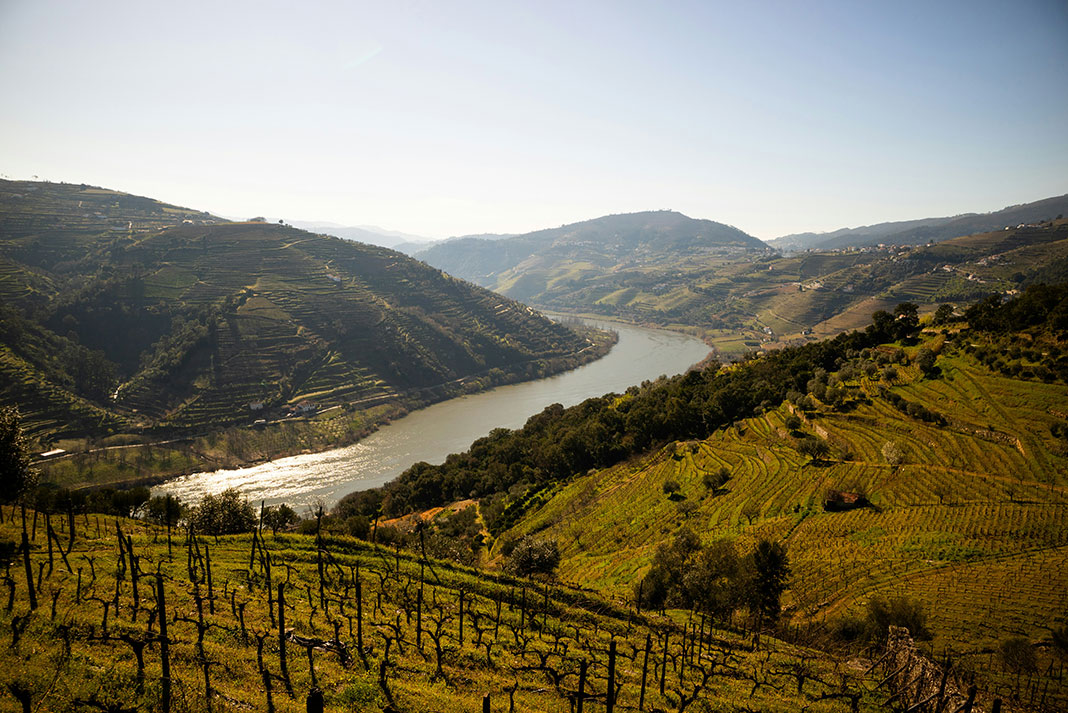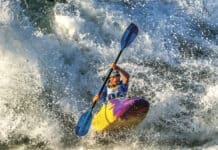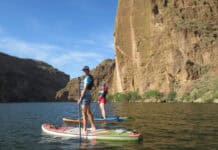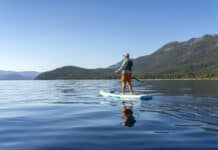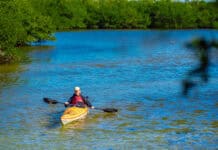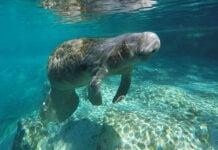According to Expedia, 71 percent of Canadians haven’t seen the northern lights—but they definitely want to. In fact, the travel hub’s survey indicated that a growing desire to witness the amazing kaleidoscope of colors that lights up the night sky, particularly in high-latitude locations, is the greatest travel trend of 2024. What better way to see the northern lights than on a paddling trip?
Aurora borealis, familiarly known as the northern lights, occur when strong solar storms pummel the Earth’s magnetic fields with charged particles. Just as meteorologists predict the weather, experts can also forecast the likelihood of northern lights. The National Oceanic and Atmospheric Administration (NOAA) is predicting that northern lights will peak in the summer of 2025, as the sun’s magnetic field shifts and solar storms become stronger (don’t worry, this is a normal cycle). Short-term space weather forecasts are also available.
It is a special treat to see the northern lights dancing over your campsite on a canoe or kayak trip. It makes sense that northern, subarctic and polar destinations are the best places to paddle and see the northern lights, along with similar latitudes in the southern hemisphere. The best times to view typically coincide with later in the paddling season; not only is solar activity more pronounced as summer turns to autumn, shorter daylight hours as the seasons turn also makes for better viewing. Regardless of your position in the northern hemisphere, aurora borealis is most frequently observed in the northern skies. The opposite holds true for aurora australis south of the equator.
Expedia identified Finland and Churchill, Manitoba as the world’s top northern lights destinations. Our article showcases the best places to see the northern lights on a paddling trip. You may be surprised to learn you don’t have to travel to the ends of the Earth to witness shimmering night skies. Sea kayakers on the Great Lakes and in the Pacific Northwest stand a solid chance of observing the aurora on August trips, just as canoeists in the Boundary Waters, Algonquin and Killarney may be amazed by curtains of color radiating from the heavens on crisp, moonless nights.
VIEW ALL TRIPS
Alaska
1 Prince William Sound
Given its northern latitude, it’s no surprise Alaska abounds with opportunities to see the northern lights—as long as you plan your trip away from the long daylight hours of the solstice. Coastal Alaska, including Prince William Sound, is a sea kayaker’s dream, with remote yet mostly sheltered waters, glaciers and bucket-list wildlife, as well as good odds of seeing the northern lights in August. Guided sea kayak trips make this Alaskan destination doable for families and paddlers of all skill levels.
2 Wild Rivers: Alsek, Noatak and more
There’s no shortage of whitewater rivers in Alaska for paddlers to drool over. Guided raft expeditions on iconic waterways like the Tatshenshini and Alsek, which cross the panhandle from Canada’s Yukon Territory and Alaska, are truly adventures of a lifetime. Wild river canoeists can experience the immensity of Alaska’s interior on the Noatak and Koyukuk rivers, where the northern lights dance over Gates of the Arctic National Park. Don’t discount the lesser-known waterways like Birch Creek and the Gulkana River, where novice whitewater kayakers can experience the Last Frontier on guided trips.
VIEW ALL RIVER TRIPS IN ALASKA
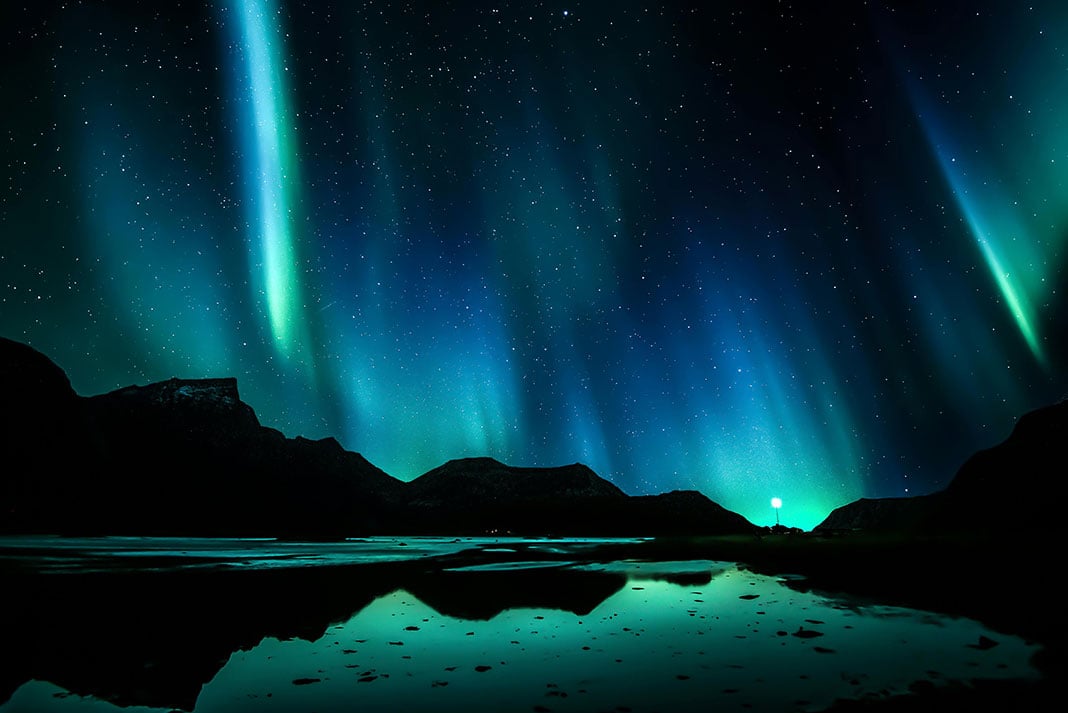
Canada’s Far North
3 Yukon
Robert Service immortalized the northern lights-viewing potential of the Yukon in “The Cremation of Sam McGee.” The Yukon is truly larger than life, living up to the legends of Service and Jack London for its incredible wilderness, fascinating wildlife and immense rivers. The Yukon River is a classic, with the same backdrop that set the stage for the gold rush well over a century ago and generally flat water suitable for canoeists and kayakers. If you’re looking for mountain scenery and whitewater, check out the rivers cascading into the Peel River watershed, including the Snake, Bonnet Plume and Natla-Keele. Farther north, several Yukon Rivers are great for rafting and canoe trips to the Arctic Ocean. As with any subarctic paddling destination, the trick to catch the northern lights is to time your trip later in the summer, when darkness returns in the lands of the midnight sun.
VIEW ALL RIVER TRIPS IN THE YUKON
4 Northwest Territories
There’s no better place for sky-watching than the treeless Barrenlands of Canada’s subarctic, including large chunks of the Northwest Territories. Classic Barrenlands rivers include the historic Coppermine. Farther west, the NWT shoulders into the Northern Rockies, giving rise to the South Nahanni River—with deep canyons and a massive waterfall ranking it amongst the planet’s most scenic waterways. Don’t discount sea kayaking trips here, too: a mid-August expedition on Great Slave Lake affords a solid chance to see the northern lights and to experience paddling the wilderness shores of a northern inland sea.
VIEW ALL TRIPS IN THE NORTHWEST TERRITORIES
Nunavut is immense, spanning the subarctic Barrenlands to Hudson Bay and north to Canada’s Arctic archipelago. Latitude dictates northern lights-viewing potential: the odds are best if you come later in the summer, once darkness has returned. Nunavut is home to countless wilderness canoe trips and signing up for a guided trip opens this territory to all levels of paddlers. The Thelon River boasts incredible wildlife and minimal whitewater challenges, making it suitable for novices. At the other end of the spectrum, the Hood River features amazing waterfalls and some of the best whitewater canoeing in the North. Paddling the Soper River on Baffin Island, home to caribou, muskox and Arctic wolves, is truly an experience of a lifetime.
VIEW ALL TRIPS IN NUNAVUT
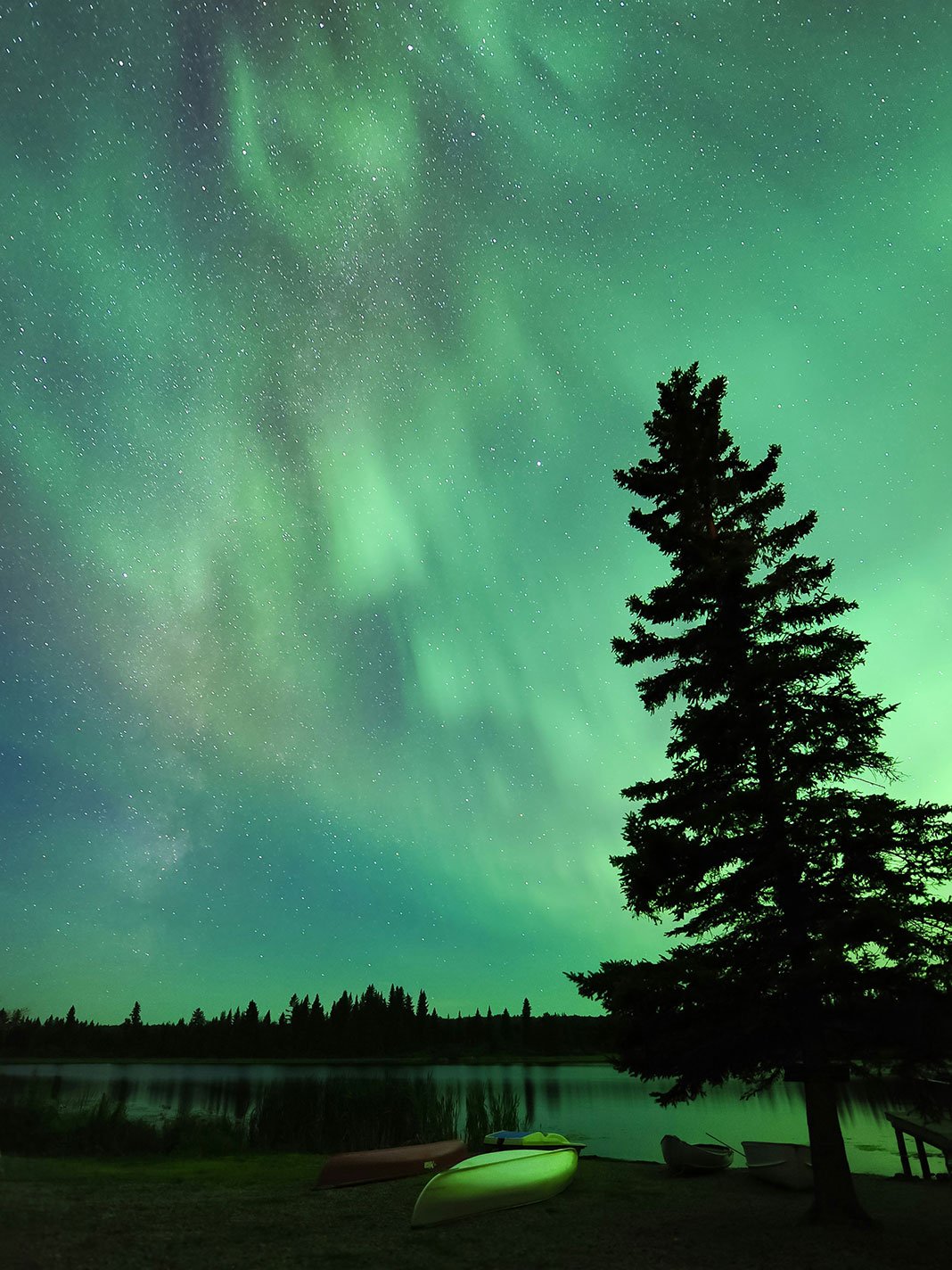
Ontario
6 Missinaibi River
An expedition on Northern Ontario’s Missinaibi River is a trip all canoeists should experience—and makes for a tempting teaser for future canoe routes across the Canadian subarctic. The Missinaibi (and Moose River) flows across over 300 miles of boreal wilderness, serving as an aquatic highway between Lake Superior and the Arctic Ocean at James Bay. The river features spectacular waterfalls and good rapids to practice whitewater canoeing, and its northerly latitudes make it a good destination to watch for northern lights. You don’t have to paddle the entire river at once: guided trips isolate the Missinaibi’s greatest highlights and provide the unique option of accessing the river by floatplane.
7 Killarney Provincial Park
By day, Killarney Provincial Park is celebrated as the “crown jewel” of Ontario parks for its austere quartzite hills and lush mixed forests. By night, this wilderness park in Northeastern Ontario is recognized as an International Dark Sky Preserve. Like other popular canoe destinations, Killarney really shines when the crowds thin in the shoulder seasons. The longer nights of September and October make for the best opportunities for stargazing and watching for the telltale colors of northern lights. Several local outfitters make it easy to plan a trip and secure tried-and-true canoes and gear.
8 Lake Superior
Lake Superior is a world-class sea kayaking destination with incredible wilderness coastlines offering a diversity of paddling experiences. Pukaskwa National Park, located north of Wawa, is a highlight of the Greatest Lake, with over 100 miles of roadless shoreline beckoning advanced paddlers to explore. North-facing campsites may offer glimpses of the aurora in July and early August, which is also the best time to paddle on Lake Superior. A local outfitter is an asset in handling the logistics of vehicle shuttles and rental gear. Guided trips are also available for intermediate paddlers.
Michigan & Minnesota
9 Isle Royale National Park
Lake Superior is truly an inland sea, especially for paddlers exploring the wild coastline of Isle Royale National Park, accessible by ferry from Northern Michigan or Minnesota. Uninterrupted views across miles of open water set the perfect backdrop to view colorful aurora on August sea kayak trips. Isle Royale is the least-visited national park in the Lower 48 and its shoreline is rugged and exposed, making it a good destination for intermediate and advanced sea kayakers. Many options for guided trips are available.
10 Boundary Waters Canoe Area
The crowds thin come autumn in the world’s most popular canoe country, making September an ideal time to find solitude in Northern Minnesota’s Boundary Waters Canoe Area Wilderness. This vast mosaic of lakes and rivers spreads across over one million acres of north woods, making for plenty of options for experienced canoe trippers to plan a trip. Regional outfitters are great resources for trip planning, rentals and vehicle shuttles and guided trips are available for novices. Later in the paddling season, Boundary Waters’ night skies often deliver remarkable curtains of yellow and green northern lights for lucky paddlers to observe, making this one of the most reliable places to view the aurora in the Lower 48.
VIEW ALL BOUNDARY WATERS TRIPS
Pacific Northwest
11 San Juan Islands
Washington’s San Juan Islands feel bucolic, set in the rain shadow of the Cascade Mountains and defined by sheltered channels and quaint communities. But this popular sea kayaking destination is also one of the northernmost points in the continental U.S., contributing to its potential as a northern lights destination for paddlers. Plenty of options are available for guided trips, outfitting packages and rentals from local businesses.
12 Haida Gwaii
The magical islands of Haida Gwaii, far offshore mainland British Columbia, are a bucket-list sea kayaking destination for their great marine and terrestrial wildlife, dreamy hot springs and rich Indigenous culture. You can add northern lights to that list, too—with the possibility of viewing shimmering auroras over the watery horizon of Hecate Strait. Outfitters are available to help experienced sea kayakers plan their own Haida Gwaii adventure, and novice to intermediate paddlers can sign up for guided trips throughout the summer months.
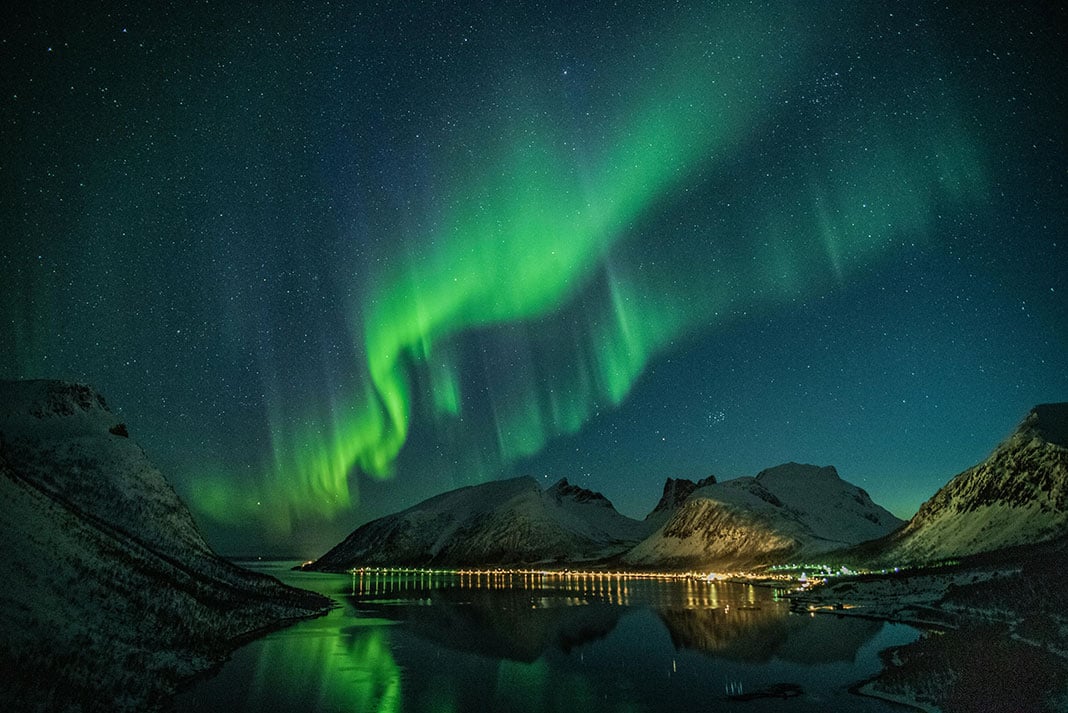
Scandinavia
13 Norway
Norway’s fjords and crenulated coastline are a dreamscape for sea kayakers. A paddling trip in a place like Tromsø reveals Norway’s immense potential for adventure. You’ll find deep, rockbound fjords and secluded gravel beaches leading to awesome hiking opportunities. The colorful homes of small fishing communities make for great cultural experiences, too. Visit a bit later in the summer to round out the trip of a lifetime with northern lights.
VIEW ALL TRIPS IN NORWAY
14 Finland
In many ways, Finland is the Scandinavian analog to Canada: the country boasts fantastic canoe tripping opportunities in several national parks as well as the Finnish Lake District, a boreal paradise of interconnected waterways. Farther north, the boreal forest gives way to subarctic taiga in Lapland, home to reindeer and rocky shorelines closely resembling North American canoe country.
Feature photo: Greg Johnson/Unsplash


